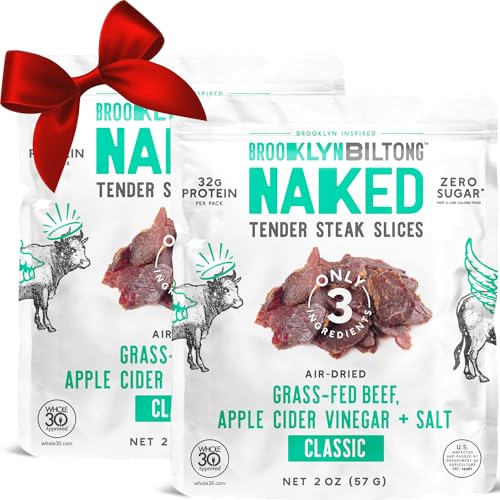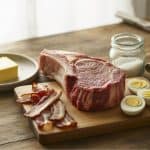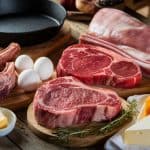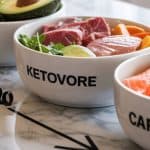Carnivore Diet: A Complete Beginner’s Guide
The carnivore diet is one of the most talked-about eating approaches today, often praised for its simplicity and potential healing benefits. But what exactly does it involve, and why are so many people curious about it?

This post may contain affiliate links. Please read our disclaimer.
Definition: What Is the Carnivore Diet?
The carnivore diet is a highly restrictive eating plan that focuses almost entirely on animal-based foods. If it came from an animal, it’s usually on the menu. That means your daily meals revolve around:
- Meat (beef, pork, lamb, chicken, etc.)
- Fish and seafood
- Eggs
- Animal fats like butter or tallow
- And in some versions, dairy products such as cheese or heavy cream (depending on your tolerance)
What makes this diet unique is what it leaves out: all plant-based foods are eliminated. That includes vegetables, fruits, grains, legumes, nuts, seeds, plant oils, and sugars.
The carnivore diet (Affiliate) takes a “meat-only” approach to eating, removing everything that grows from the ground. People often turn to it for simplicity, healing, or to troubleshoot food sensitivities though it’s definitely a big shift from a standard balanced diet.
Core Principles of the Carnivore Diet
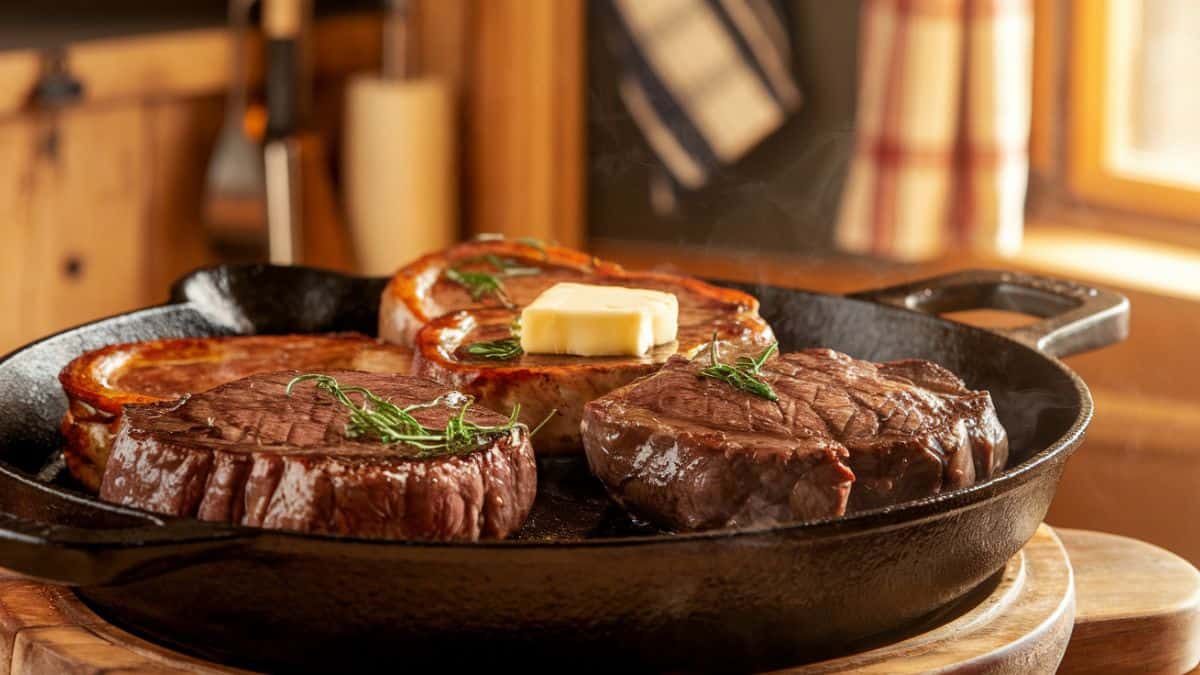
At its heart, the carnivore diet is built on a back-to-basics, animal-only philosophy. The guiding principles are simple, but very strict:
All Meat, Nose-to-Tail
You can eat virtually every part of an animal muscle meats, organ meats, and even bone broths. Common staples include:
- Beef, pork, lamb, chicken, and turkey
- Fish and shellfish like salmon, tuna, shrimp, or oysters
- Organ meats (for those who practice a “nose-to-tail” approach)
Animal Fats
Healthy fats come directly from animals. Cooking and flavoring typically rely on:
- Butter
- Beef tallow
- Pork lard
These fats not only provide energy but also help your body adapt to relying on fat for fuel.
Optional Extras
While purists may avoid them, some followers include:
- Eggs in any form
- Cheese (especially hard, aged cheeses)
- Heavy cream (depending on tolerance to dairy)
Strict Elimination
On this diet, you cut out all plant-based foods and other carb-heavy staples, meaning no:
- Vegetables or fruits
- Grains, beans, or lentils
- Nuts, seeds, or plant oils
- Sugar, sweets, or processed carbs
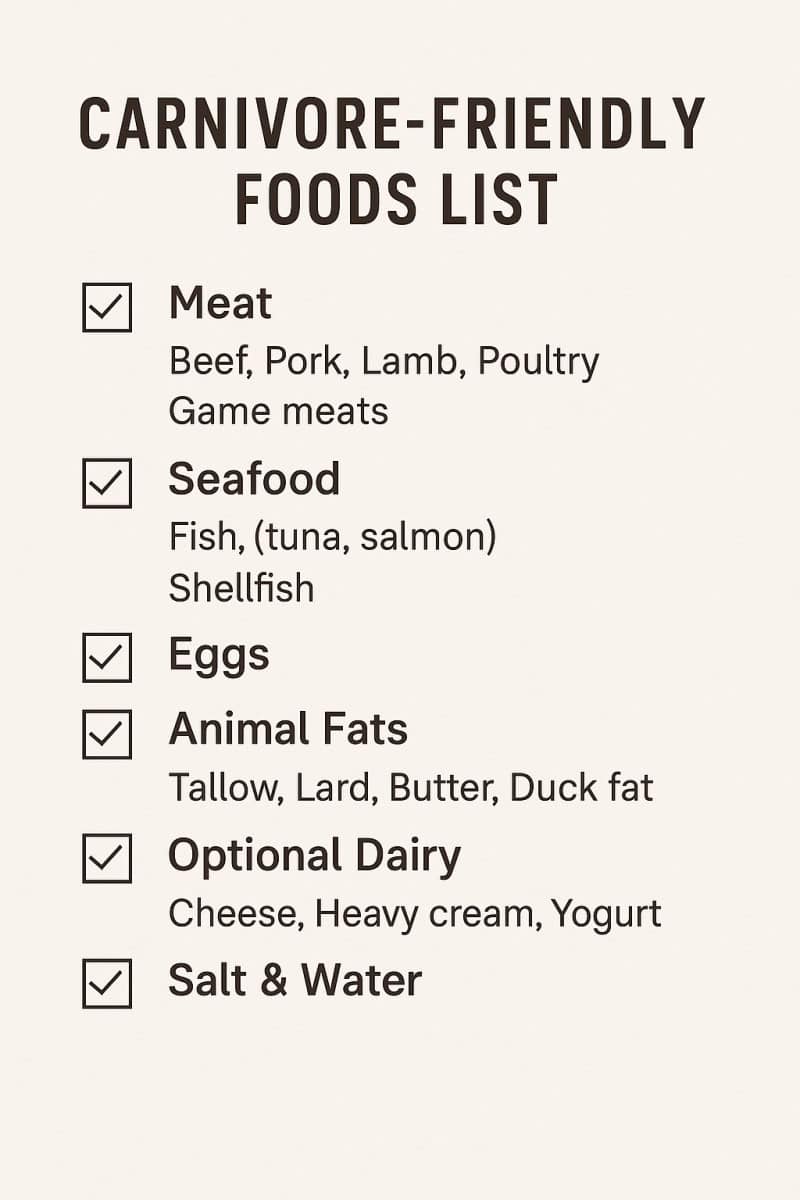
Quick Start: 10 Easy Steps to Begin the Carnivore Diet
Starting the carnivore diet doesn’t have to feel overwhelming. Think of it as stripping eating back to its simplest form animal foods, cooked the way you like them, no calorie counting, no stress. Here’s a straightforward 10-step plan to help you get started with confidence.

1. Learn the Basics
At its core, the carnivore diet is simple: eat only animal-based foods. That means meat, fish, eggs, and (if you tolerate it) some dairy. Everything plant-based fruits, veggies, grains, nuts, seeds is left behind.
2. Stock Up on Carnivore Staples
Fill your fridge and freezer with nutrient-rich, fatty cuts of meat like ribeye, ground beef, salmon, chicken thighs, and bacon. Don’t forget eggs, butter, and maybe a few cheeses or cream if you’re not aiming for strict carnivore.
3. Clear Out the Extras
Make things easier by removing temptations like pasta, bread, snack foods, and plant-based oils from your kitchen. Keeping your pantry clean helps you stay on track.
4. Embrace Nose-to-Tail Eating
Carnivore isn’t just about steaks nutrient-dense organ meats like liver, heart, or tongue can help cover vitamin and mineral gaps. If that’s not your thing, no worries start with basics and work your way up.
5. Fuel with Animal Fats
Fat is your friend here. Cooking with butter, tallow, or lard not only adds flavor but helps keep your energy steady throughout the day.
6. Keep Beverages Simple
Stick with the basics: water, sparkling water (plain), or bone broth. Some people include black coffee or tea, but strict carnivore usually avoids anything plant-based.
7. Plan for the Adaptation Phase
Your body will likely need time to adjust, especially if you’re used to carbs. The first week or two might bring fatigue, mood swings, or digestive changes (often called “keto flu”). Extra salt, hydration, and patience will help you push through.
8. Eat 2–3 Satisfying Meals a Day
Forget snacking this way of eating keeps you naturally fuller for longer. Aim for hearty, balanced meals of protein and fat, and let hunger guide your timing.
9. Mix Up Cooking Methods
To keep things interesting, rotate your meals between grilling, roasting, pan-searing, or even air frying. Variety in texture makes sticking with the diet much easier.
10. Commit to 30 Days
Give the carnivore diet a real chance by trying it for a full month. This gives your body time to adapt and helps you see whether the benefits like energy, mental clarity, or fewer cravings are worth it for you.
Quick Tip: Keep it simple. If you’re ever unsure whether something is “allowed,” just ask: Did it come from an animal? If the answer is yes, you’re good to go.
Goals & Benefits of the Carnivore Diet

Supporters of the carnivore diet point to a range of potential benefits, many of which are based on personal experience rather than long-term scientific studies. Here are the most common claims:
- Reduce Inflammation: Some followers report relief from symptoms of autoimmune disorders, arthritis, skin conditions, and other chronic issues. By removing plant-based foods, allergens, and potential irritants, the diet may act as a reset for the body.
- Simplify Eating: No more calorie counting, portion measuring, or tracking macros. The plan is simple: eat animal foods until you’re satisfied. This makes it easy for many people to stick to without overthinking meals.
- Potential Fat Loss & Metabolic Improvements: Because carbs are eliminated, the body shifts toward burning fat for fuel. Some use the carnivore diet as a stricter form of keto or as an elimination diet to uncover food sensitivities that may have been slowing weight loss or causing discomfort.
- Steady Energy & Mental Clarity: Many anecdotally report fewer energy crashes, less brain fog, and more consistent focus throughout the day. This is often attributed to stable blood sugar levels and a fat-based metabolism.
Common Foods Eaten on the Carnivore Diet
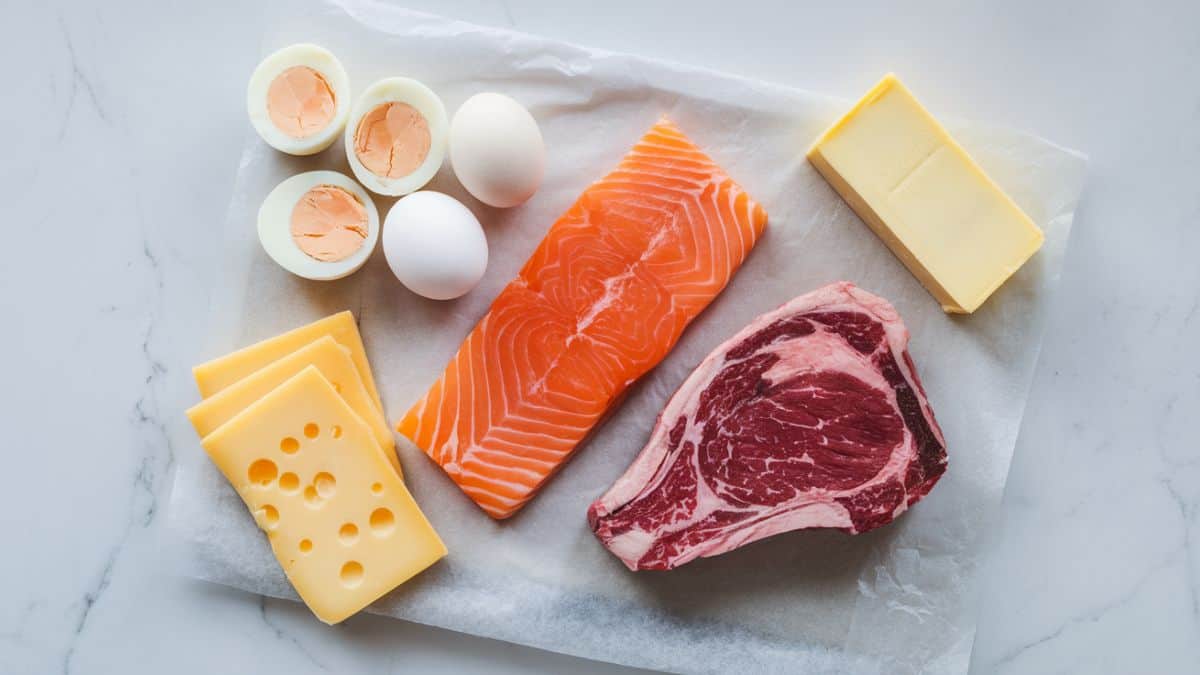
Although restrictive, the carnivore diet still offers variety within the world of animal-based foods. Here’s what typically makes the cut:
Proteins
The foundation of the diet is meat and seafood, eaten in generous portions:
- Beef, pork, lamb, goat, and venison
- Poultry like chicken, turkey, and duck
- Fish such as salmon, tuna, sardines, and mackerel
- Shellfish including shrimp, crab, and oysters
Eggs
Eggs are one of the most versatile staples. Followers enjoy them:
- Boiled for snacks or sides
- Scrambled for quick meals
- Fried or poached for variety
Dairy (Optional)
Not everyone includes dairy, but when tolerated, it usually comes in the form of:
- Hard, aged cheeses (like cheddar or parmesan)
- Heavy cream for coffee or cooking
- Butter or ghee for cooking and flavor
Note: Stricter versions exclude milk and yogurt due to lactose and carbs.
Beverages
Drinks are simple and meant to avoid added sugars or plant-based ingredients:
- Water (still or sparkling)
- Bone broth for electrolytes and minerals
- Coffee or tea (though some carnivores eliminate these too)
Foods to Avoid on the Carnivore Diet
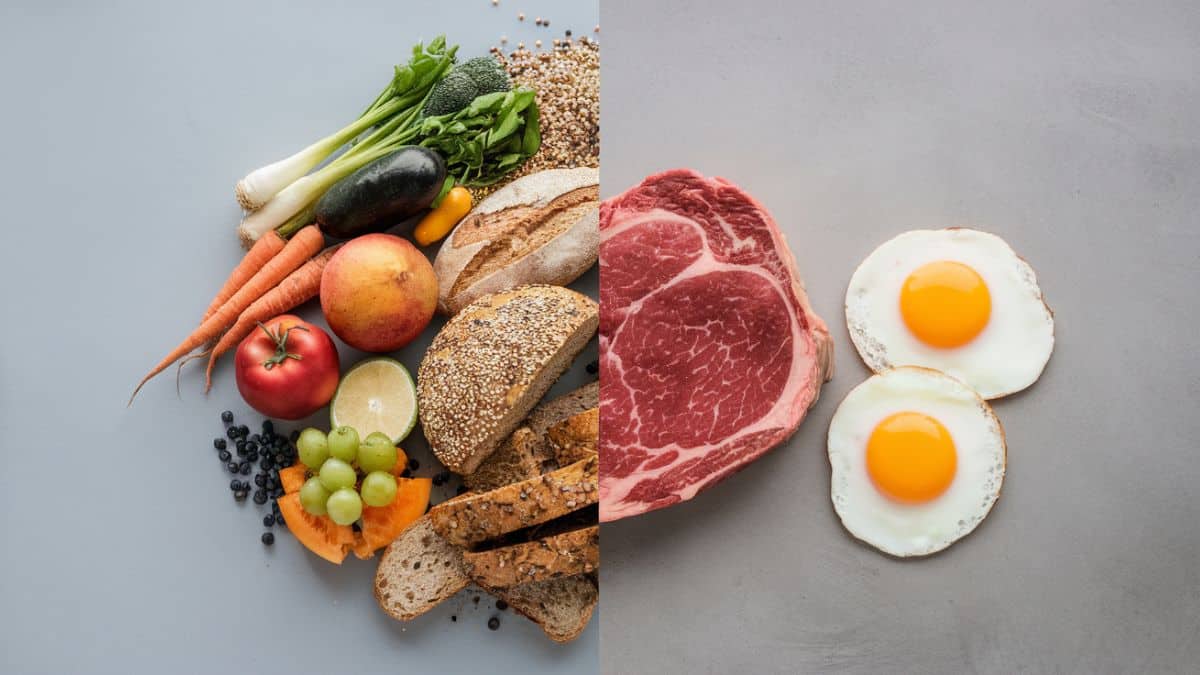
The carnivore diet draws a clear line in the sand if it’s not from an animal, it’s off the table. That means eliminating all plant-based and processed foods, including:
Plant-Based Foods
- Vegetables (leafy greens, root veggies, legumes)
- Fruits of all kinds
- Grains such as wheat, rice, oats, corn, and quinoa
- Nuts and seeds, including peanut butter and nut flours
Plant Oils & Fats
- Olive oil, canola oil, sunflower oil, soybean oil, and other seed oils
Sugar & Processed Carbs
- Candy, baked goods, bread, pasta, and desserts
- Sweetened drinks like soda, juice, or sports drinks
Dairy (Restricted in Stricter Versions)
- Milk, yogurt, and anything high in lactose or carbs
Variations of the Carnivore Diet
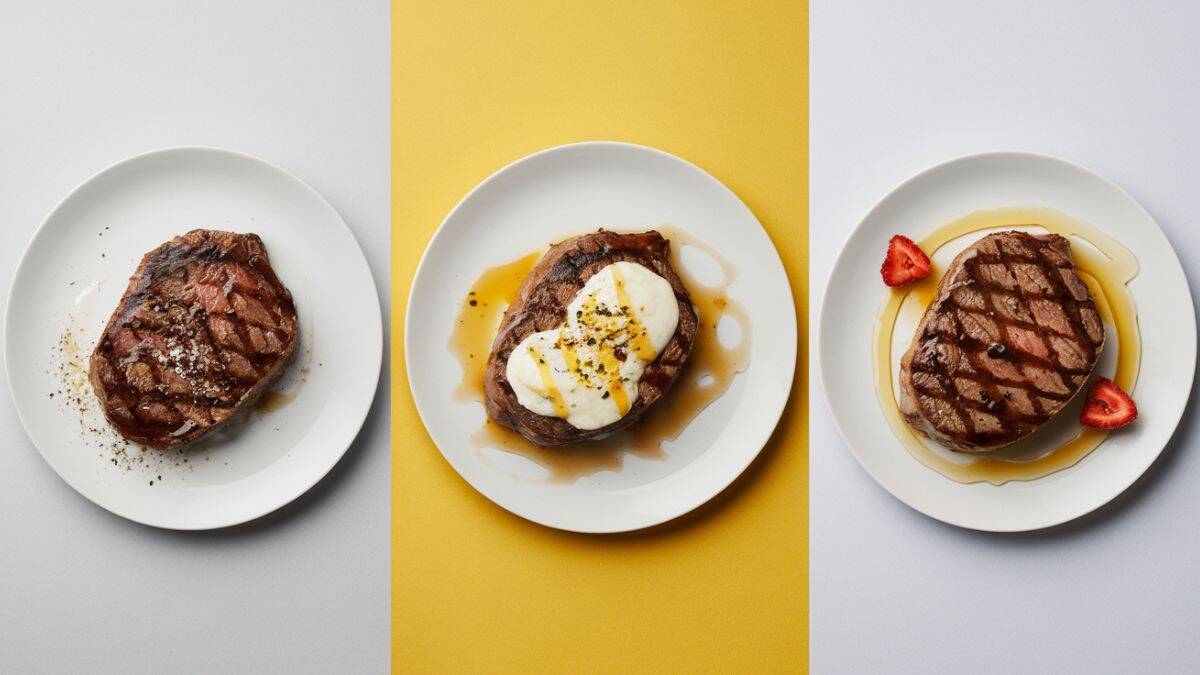
Not everyone follows the carnivore diet in the exact same way. While the foundation is always animal-based eating, there are a few different approaches:
Strict Carnivore
This is the most rigid form of the diet often referred to as the “meat, salt, and water” version. It eliminates all extras, even dairy, eggs, and coffee. The focus is on pure animal protein and fat only.
Carnivore + Dairy (Ketovore Style)
Some followers expand the diet slightly to include low-carb dairy products.
- Common additions: cheese, butter, ghee, and heavy cream.
- This style can feel more flexible and enjoyable while still staying animal-based.
Animal-Based Approach
A looser interpretation that blends carnivore with paleo or keto principles.
- Includes animal foods as the foundation.
- Allows small amounts of honey, fruit, or raw dairy.
- Sometimes seen as a more sustainable option for long-term eating.
Considerations & Criticisms of the Carnivore Diet
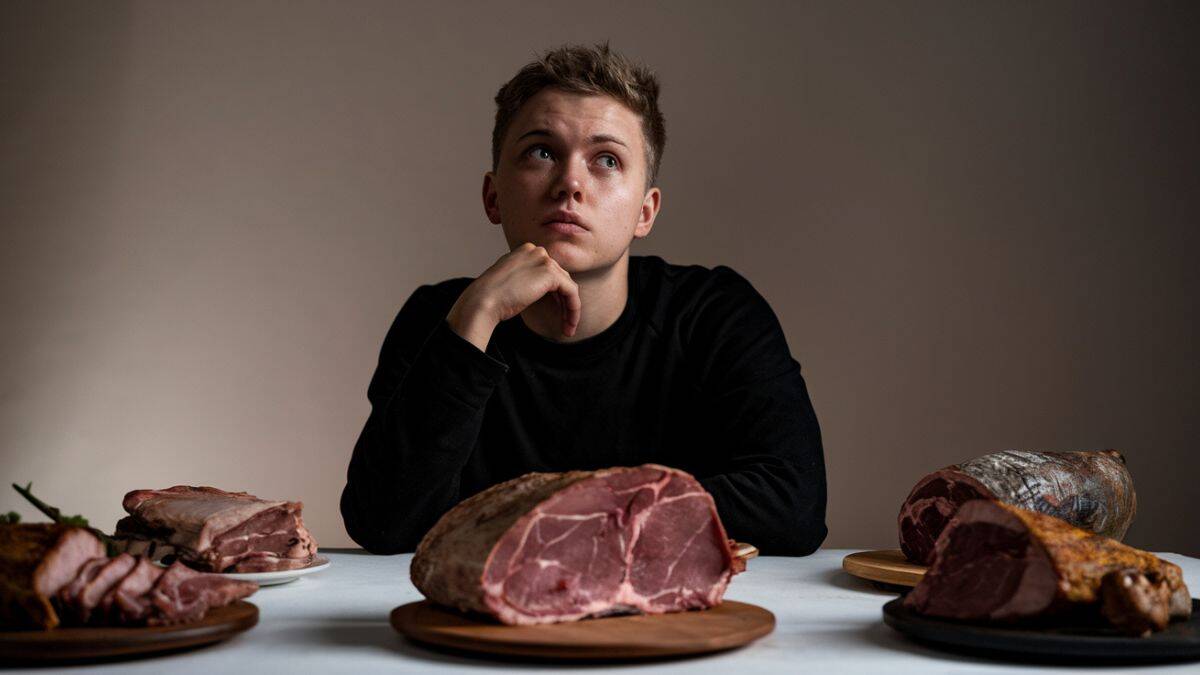
While many people report benefits, the carnivore diet is not without controversy. Nutrition experts highlight potential issues such as:
- Nutrient Gaps – Possible deficiencies in vitamin C, fiber, and plant-based antioxidants
- Heart Health Concerns – High saturated fat intake may impact cholesterol and cardiovascular risk for some
- Gut Health Changes – Lack of fiber may cause constipation for some, though others report less bloating
- Sustainability – Socially restrictive, challenging when eating out, and repetitive if variety isn’t prioritized
Sample Day on the Carnivore Diet
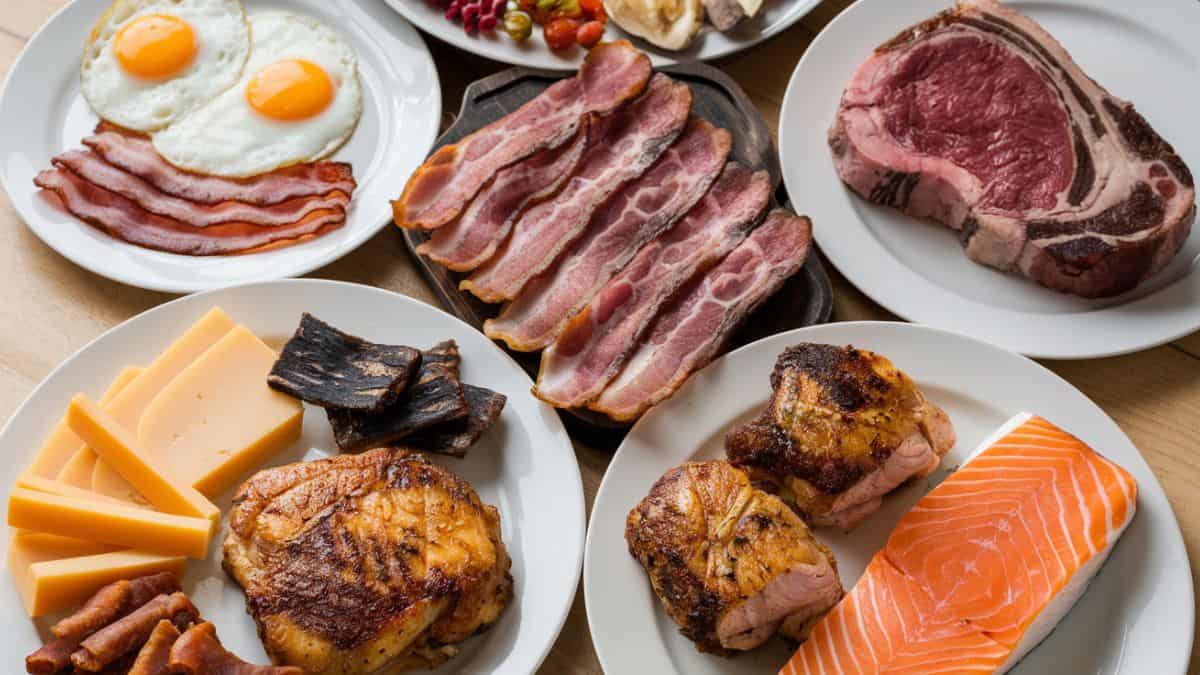
One of the biggest appeals of this way of eating is simplicity. Meals don’t require complicated recipes just animal foods, cooked the way you like them. Here’s what a typical day might look like:
Breakfast
- Scrambled eggs cooked in butter
- A side of crispy bacon or leftover steak
- Optional: black coffee or plain water
Lunch
- Grilled ribeye steak (seasoned with salt only)
- Served with a drizzle of melted butter or beef tallow
- Optional: sparkling water
Dinner
- Roast chicken thighs with crispy skin
- A side of pan-fried salmon for extra omega-3s
- Optional: bone broth for added minerals and hydration
Snacks (if desired)
- Hard-boiled eggs
- Slices of aged cheese (if tolerated)
- Beef jerky (made without sugar or additives)
This kind of meal plan is both filling and straightforward, but it can feel repetitive if you don’t rotate proteins and cooking methods. Many followers emphasize variety by switching between red meat, poultry, and seafood to keep things balanced.
Frequently Asked Questions About the Carnivore Diet
Can I have coffee or tea?
Strict carnivore eaters usually avoid them since both are plant-based. That said, many people still enjoy a cup of black coffee or unsweetened tea and stay on track. If you want to go all-in, stick to water and bone broth instead.
What seasonings can I use?
Pure carnivore typically means salt only, but plenty of followers use pepper, garlic powder, or herbs to keep meals interesting. It comes down to whether you’re aiming for strict or flexible.
Is dairy part of the carnivore diet?
It can be, depending on your tolerance. Butter, ghee, hard cheeses, and heavy cream are popular, but some find dairy stalls weight loss or causes bloating. Try it for yourself and see how your body responds.
Do I have to eat organ meats?
Not at all. Organ meats like liver, kidney, or heart are nutrient powerhouses, but if you’re just starting out, they’re optional. Plenty of people do well focusing on steaks, eggs, and seafood first.
What about honey or artificial sweeteners?
Most carnivores steer clear since they can trigger cravings. Honey is sugar, and most sweeteners are made from plants. If you’re easing in from keto, a little may help the transition, but the goal is to reduce your taste for sweet things.
Besides water, what can I drink?
Plain water is always the best choice. Unsweetened sparkling water or homemade bone broth are also good options. Some choose to keep coffee or tea, while stricter carnivores cut them out completely.
Will I feel different when I start?
Yes many beginners go through an adjustment period. Tiredness, brain fog, or digestive changes are common in the first week or two. Staying hydrated, adding salt, and eating enough fat usually make the transition smoother.
Is carnivore safe long-term?
The jury’s still out on long-term research. Some thrive on carnivore for years, while others eventually shift to ketovore or keto to widen their food choices. The best approach is to monitor your health and check in with your doctor if you plan to follow it long-term.
More Carnivore Recipes
Try these you will love them!
- Carnivore Pizza
- Carnivore Lasagna
- Carnivore Chicken Chips
- Carnivore Turkey Roulade
- Carnivore Spanish Chorizo Frittata
- Carnivore Ice Cream
- Baked Carnivore Cheesecake
- Carnivore Coffee
Carnivore Diet Guides
Check out more information about a meat based or carnivore diet!
Wrapping Up
The carnivore diet is one of the most elimination-heavy and straightforward eating approaches out there. By focusing only on animal foods, it may help people reset their digestion, uncover hidden food sensitivities, or simplify their eating habits.
But it’s not for everyone and because of its restrictive nature, it’s best approached with careful thought and professional guidance.

Michelle
Hi, I’m Michelle, the founder, owner, author, and editor of OvenSpot. My passion for one-pot cooking commenced when I was working to prepare cafeteria lunches for school students. I am now on a mission to assist you in choosing the cooking pot or appliance you will use daily. As well as in-depth information to assist you in using and caring for your cookware and appliances. Along with the yummy recipes I use at home.
Questions? Reach out to Michelle at [email protected]



